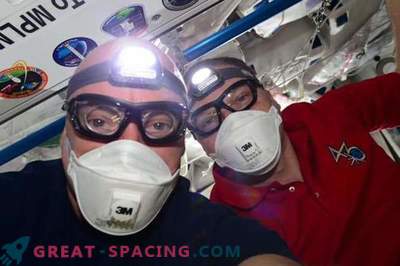
There are many aspects of traveling and exploring the Red Planet, so NASA is open to suggestions to make our interplanetary dreams come true.
NASA Road Map to the Red Planet

It's no secret that NASA is investing in long-term reconnaissance missions. The agency just recently ended up with a human mission on the International Space Station a year in length, where Scott Kelly struck the world with his social media posts. But moving deep into space takes a lot of time. NASA has prepared many projects that should help explore the Moon and Mars in the coming decades.
One such project is the creation of a habitat that will allow people to live in space beyond the Earth-Moon system. And this is not so easy, because there are a number of points related to the distance from the home planet. If there is a time delay in communication, then how can people work without round-the-clock support from the control center? And how to cope with such problems as radiation or repair and replacement of spare parts?
Transportation (how do we get there?)

NASA expects the ISS to be available when the first ships for long-distance travel appear. Thus, any prototype should be able to dock with the ISS to allow their further immediate development and testing. The transport system should also be able to work in what NASA calls the distant retrograde orbit (ORO) (distant retrograde orbit - DRO). And it should function both by itself and with the crew. ORO is a type of orbit around Moon, which would give the crew a platform for training to perform work outside the “home”, during trips taking several days. The system should also be able to move independently of each other or in combination with the Orion ship.
Residence (where will we live?)

Those who travel frequently by car over long distances with their families know that every second is equal to a day. Apollo's astronauts held out much better, but this was facilitated by a huge amount of preliminary training and an understanding that the whole world was watching them.
Thus, any future habitat should be comfortable enough for the crew and its equipment to survive and feel normal for an arbitrarily long mission (initially from 30 to 60 days). The habitat must also be reliable in terms of life support systems, including fire detection and lighting. After all, repair work will be quite problematic.
Operations (how will we work?)

It will be much better if the habitat is multifunctional and can work for many years, since building a new one will be very expensive. In this case, NASA wants its expiration date to reach 15 years of work in space. In addition, it must allow docking with other vehicles (for example, with the Orion) and even accommodate two additional crew members, regardless of whether the standard crew is on board. There must also be the possibility of an 8-hour spacewalk without depressurization of the entire space.
Environment (what can kill me?)

Like the ISS, the future habitat will serve as a testing ground for providence research. So, astronauts, in addition to entertaining visitors and maintaining the habitat in normal conditions, will conduct a variety of experiments to see how people are ready for similar conditions and how much we are generally ready for a long stay in deep space.
NASA specifically insists on “testing system elements, various operations, and human health when performing missions outside the Earth-Moon system.” Because if something from the fact that Mark Watney showed us in “The Martian” is real, then life in space is tough enough. Practice is necessary to keep everyone safe and in a state of constant productivity, as far as possible while working away from “home”.











































